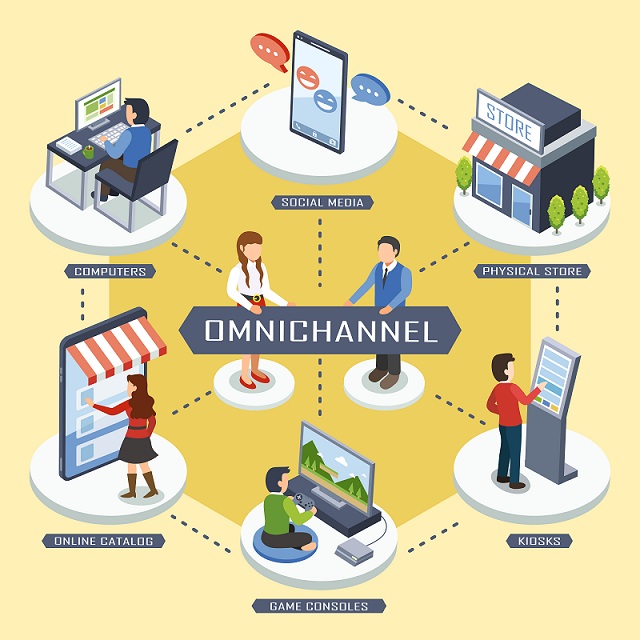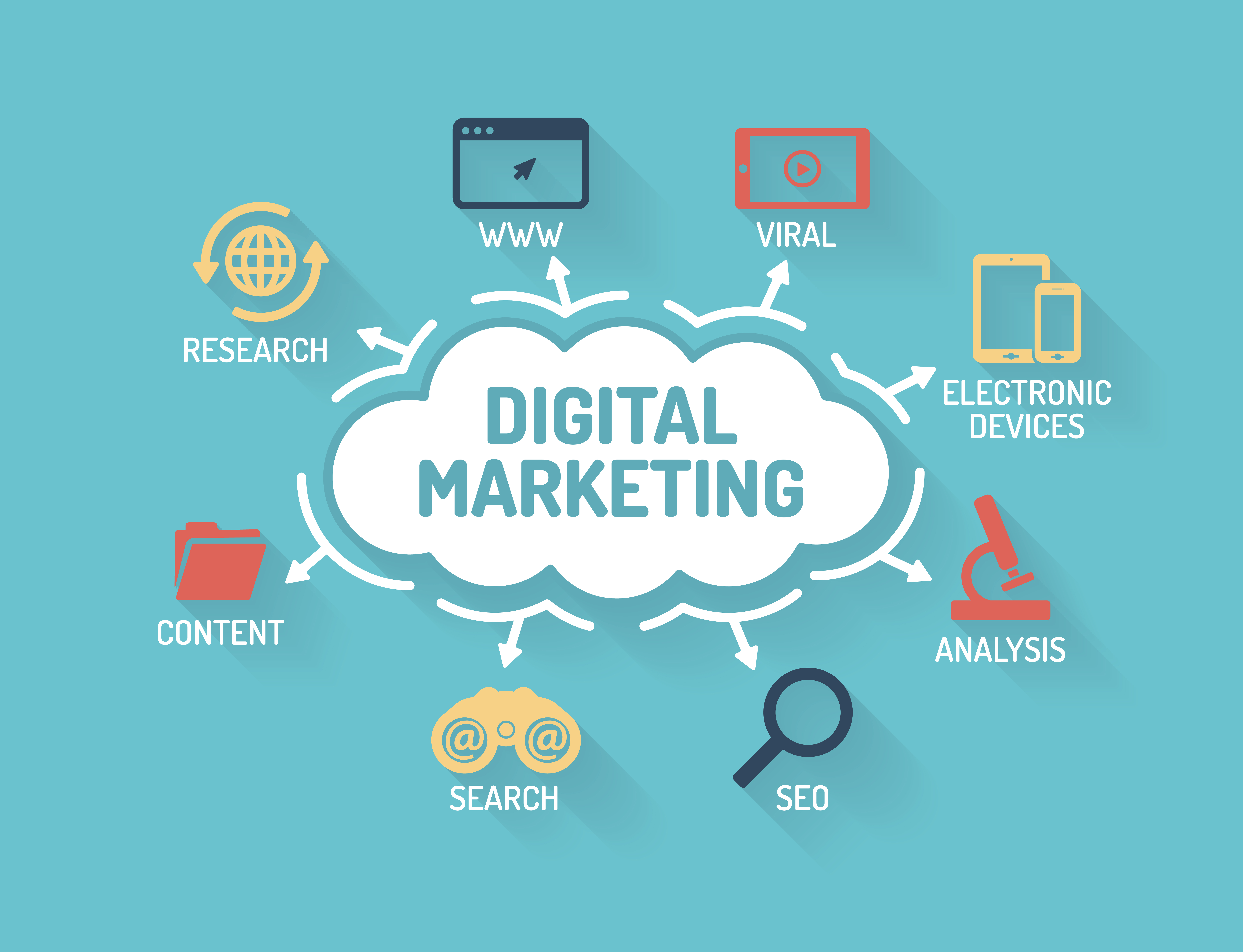Category: Enterprise Software
Businesses in the present are making every move to ensure that they stay ahead of their competitors in the market. A rapid growth in terms of market share, revenues and customer base is desired by every business unit. One of the strategies being used by the businesses to ensure faster growth is the development and deployment of the enterprise mobility applications.
Enterprise Mobility is the trend that allows the employees of a business organization to work remotely to fulfill the business tasks and activities using mobile devices, mobile applications, and cloud-based solutions. An enterprise mobility application refers to a mobile app that is developed to target the enterprise-related problems.
Enterprise mobile applications can enhance business growth for companies in the following ways:
- Better Work-Life Balance
Every employee engaged with an organization aspires to maintain a healthy balance between the professional and personal commitments. Enterprise Mobility Applications allow the employees to experience better flexibility by allowing them to carry out business tasks from any of the remote location. 69% of the IT decision-makers support the idea of BYOD as they have witnessed positive results with the inclusion of the same. Workers in the United States on an average save 81 minutes per week with the aid of BYOD. There are 49% employees that say that they are more productive while working on their personal devices.
- Improved Workflow
Critical issues may crop up in a business environment anytime, without prior notices or hints. Enterprise mobile applications allow the employees to resolve such issues on an urgent basis irrespective of their presence and availability at the office location. Real-time interactions are also made possible with the clients that result in better customer engagement and satisfaction. The overall workflow, therefore, improves with the use of such applications.
- Reduction in Costs
Enterprise mobile apps can be made compatible and accessible on the personal devices of the staff members. It leads to the reduction in the cost of the devices and the share may be used in other significant business requirements.
- System Independence
There is a higher level of system independence provided to the employees with the use of enterprise mobility applications. It leads to the execution of the tasks from any network and the tools are installed in the devices of the employees.
- Reduced Paperwork
More paperwork leads to increase the number of risks in the business, such as loss of documents, replication of data and inefficiency in the storage and management of the documents. With the use of enterprise mobility applications, there are electronic documents that are used for sharing and transactions. These are easier to maintain and can also be processed at a faster pace as compared to the paper-based documents. The overall business speed, therefore, gets enhanced as a result.
- Customer Engagement
With the improvement of the workflow of a business and the non-stop availability of the employees, the customers feel connected with the organization. There are higher levels of transparency that can be maintained to gain customer trust and satisfaction. Rapid resolution of the defects and issues along with urgent sharing of information are some of the abilities that are made possible through the enterprise mobility applications. It leads to the better engagement with the customers and the reputation of the business organization also improves in the market.
- Empowers the Field Workers
There are several businesses that include a lot many field workers to carry out operational business activities. These field workers may experience certain issues such as difficulty in understanding a task or emergence of a conflict between two resources. Enterprise mobility applications may be used in such scenarios to contact the team heads and managers for maintaining the continuity of the operations. Also, activities such as status reporting and sharing of information can be done in a matter of seconds. All of these capabilities lead to enhancement of the processing speed of the operations resulting in faster business growth.
There are technological innovations and advancements that are being carried out with each passing day. It is required for the business organizations to remain updated with the technological changes and adapt the same to their functioning. The practice will allow the business units to achieve their goals accurately and rapidly. Enterprise mobility applications are a contribution of technology that has benefitted a lot many organizations. However, the inclusion of these applications in the business architecture may vary from one business unit to the other. Factors such as nature of the business, projects that are undertaken by the organization, customer expectations, project team members etc. shall be considered before moving on to the use of enterprise mobility applications.
Stay up to date on what's new

Featured Blogs
Stay up to date on
what's new



Talk To Our Experts
A business can significantly benefit from top-of-the-line IT infrastructure that helps reduce costs and thereby increase revenue. Organizations today find it necessary to have an entire space dedicated to top data centers as opposed to few years before, when, having a few servers on premises was the norm. Enterprises demand a robust IT infrastructure model that delivers operational efficiency, high performance, minimum downtimes and maximum cost reduction.
Advocating for improved DevOps is not easy for growing organization, especially when infrastructure is not a core competency. Let’s consider the case of our client, a manufacturing giant, whose growth is constrained by a weak IT Infrastructure. Here, what should the world’s largest cooler manufacturing company, headquartered in Texas, the United States with over 1200 employees and over 500 different products do, – focus on their business or spend their time and resources on infrastructure and facility management?
The Client
Our client is world’s #1 cooler, drink containers and supporting accessories design and manufacturing company, shipping products to more than 250 retailers worldwide. They wanted to do away with the hassles of managing their IT infrastructure management and needed a right partner to independently manage their systems, data centers, facilities and infrastructure support.
IT Challenges Faced by the Client
In an effort to optimize ownership costs and system performance, the client transformed their IT systems from IBM mainframes to Sun SPARC servers and Oracle software. The client faced several issues after the implementation of Oracle’s Enterprise Business Suite, for which they sought Fingent’s Help.
Their core applications ran on Solaris OS upon Sparc hardware, Oracle Linux on Intel and Microsoft Windows server on Intel. To better support the applications, better synergy was needed between the OS Systems Administration and the Oracle DBAs. The client also had to relocate their data center twice, relocate several terabytes of data, and immediately implement a Disaster Recovery site at their co-location facilities.
How Fingent Helped Igloo Manage Their IT Infrastructure
The client asked Fingent to replace their previous OS Admin team to enhance their IT operations, infrastructure, upgrade technology and systems and minimize outages to have a stable and high-performance environment. We installed the latest Solaris, including Operations Center, allowing Igloo to move away from Zone virtualization to a multi-node database and application servers. With Ops Center, they are now able to move their core EBS application from one Sparc machine to another in real time – without any downtime hindering their business processes. Also, the maintenance patches are applied without any outage.
Fingent offered the following services to the client:
- Desktop Management
- Server Management
- Network Management
- Vendor Coordination and Management
- Data Center Virtualization & Relocation
- 24*7*365 Days Support for Production Environment
Solution & Technology Highlights
- Full-Scale IT planning, installation, & project management
- X86 & Sparc Server Virtualization and management using Oracle VM manager & Oracle Enterprise Manager OpsCenter with Oracle ZFS Storage Appliance resulting improved application and DB performances and increased revenue for the customer.
- Disaster Recovery Datacenter build to a new location
- Introduced Cloud Environment
- 24/7 monitoring, maintenance and supporting of entire Customer Infrastructure.
- Automation of OS deployment for Solaris, Linux and Windows Servers.
- Enabled monitoring of all hardware using Nagios for proactive support.
Business Benefits for the Client- A ROI of approximately 165% over 2 years
We ensured that the client’s IT environment ran efficiently and optimally throughout a year to ensure maximum uptime and minimal costs. Our team constantly worked to solve every challenge that the client faced in a very short span of time, and supported their future expandability and redundancy, within their budgeted cost factors. And as a result, the following benefits and results were incurred:
- 24*7*365 availability of IT infrastructure management
- Consistent increase in productivity and turnaround time
- A return on investment of approximately 165% over 2 years
- World-class infrastructure maintenance, Stable productive environment & guaranteed uptime
- Better control over existing infrastructure
Fingent’s Team was able to build trust and confidence in the client’s infrastructure, by building better speed, efficiency, and manufacturing readiness.
“ Indeed, the ultimate goals was to ensure that we guarantee a degree of quality and service to ensure that the client has no roadblocks in its growth path” says Vincy, Manager, Development and Operation- Infrastructure.
Fingent was an ideal choice for the client as their facilities management partner because of our expertise in providing top-notch IT services across various industries and landscapes. We ensured that the complete responsibility of IT infrastructure management was taken over from the client’s shoulders.
Want to get better ROI from your IT Infrastructure investments? Take a tour here or talk to us today.
Stay up to date on what's new

Featured Blogs
Stay up to date on
what's new



Talk To Our Experts
In today’s digital age, a website is your business’ window to the world, irrespective of whether you are a brick and mortar establishment or an online entity. Similarly, the need for a dedicated website is not just limited to startups but is equally vital for established business. Even if your business is doing exceptionally well, investing in a well-designed and responsive website can help you reach out to a wider cross-section of the audience and increase your sales manifold.
Here is rundown on how custom website development services can turn the tide for your business:
Website Development and Its Advantages
Custom web development is one of the finest things you can do to guarantee the success of your business. In addition to improving your visibility, customized website development can help your business in the following ways:
- Customized website development boosts your credibility and adds a certain brand authority to your business.
- A professional-looking website can bring you big gains without an astronomical investment, thus, offering a higher return on investment (ROI) than traditional means of advertising.
- It does not matter whether you are a newbie or a seasoned market player, there is bound to be competition in your realm of trade. A dedicated website can assist you in leveling playing field and even beating your competitors.
- It boosts your advertising and marketing endeavors across different channels. Your social media marketing and email marketing campaigns are likely to resonate better with your audience if these lead them to a website.
- Custom designed websites are cross-browser well-matched.
- Custom developed websites also costs nearly same as of any template based solution. They may have little higher cost but offer numerous benefits and total control on each part and role of the website.
Specialized, clean, and well-organized online presence is essential for preserving your brand reputation. General designs can create a negative impression of the product or service quality, the reason being customers see you as no dissimilar from thousand other companies. The website represents your business in terms of superiority, quality, and individuality, so you need to have one developed skillfully.
Importance of Multiple-Channel Presence
At a time when smartphones and handheld gadgets rule the roost, the number of people accessing websites through a desktop computer is fast dwindling. Almost everyone likes to browse the internet on the go. Therefore, a website with a responsive design – that ensures your website is displayed correctly and uniformly across platforms, devices and screen sizes – is essential to stay relevant in the dynamic online landscape.
As per statistics, whopping 67 percent users are more likely to use an enlisted service or buy products on a website with a clean, responsive design. In contrast, 61 percent users are likely to exit a website with an unfriendly layout and design. The bottom line is – a potential user may bounce back from your website and move to that of your competitors if you don’t cater to a multiple-channel presence.
How Digital Marketing Can Help
Building a website from scratch is no big deal, given the user-friendly content management systems like WordPress. Even so, if you really want to make an impact with your web presence, it is advisable to use professional custom website development services because you don’t just need to build a carefully-strategized site but also work toward improving your search engine rankings to attract massive traffic. People will know that you exist, only when your website is visible in search engine results. A smart digital marketing campaign can help in bolstering your web presence to clock-in tangible gains.
Stay up to date on what's new

Featured Blogs
Stay up to date on
what's new



Talk To Our Experts
Enterprise software solutions are the backbone of an organization. Selecting one for your organization is a great responsibility as it requires detailed analysis at each and every step. The major challenge lies in understanding that every organization’s structure is different and cannot do with the same software that was used in your previous organization or is used at the competitor’s company. To make your task easy, here are 8 challenges to avoid before purchasing an Enterprise Software.
1. Change Management

One of the key understandings that should come with a new Enterprise Software is that there is a need for identifying the changes in the IT infrastructure beforehand and then implementing it. Know how much change is required and if it is possible to handle before purchasing the new software. Also, the employees need proper training for change management and to get them comfortable with the new system before it goes live on an organizational scale.
2. Physical Requirements
Before jumping into a purchase decision, figure out what is the current IT infrastructure landscape, if it fits well or requires changes. For a newer setup, choose the software wisely and then plan the landscape. But remember, the software you choose defines this landscape and should be thoroughly checked to avoid any unwanted changes in the future.
3. The load of migration

Data is the basis for every industry functioning in this day and age. Introducing newer software to the system means adding your current data to it for validation and future operations. Check the requirements of the new system you plan on incorporating and if the required is way too much. Remember data is imperative to the organization and correct migration will minimize errors.
4. What the vendor has to offer
Sometime Enterprise Software vendors are too enthusiastic to sell the product but lack a structure post-purchase. Figure out what are the key support promises that they offer and if they have a track of delivering them. A due diligence of the provider should not be skipped especially if the vendor is not a big company.
5. Readying the team

Internal challenges are one of the key points to consider for the purchase. You will have to understand the requirements of the enterprise software development company well along with the features required. Each department will offer a different list of features they need. The challenge is to create a project scope that encapsulates all these important points and uses it as a foundation to identify the right software.
6. Software scope
Considering any enterprise software, and its capabilities, it is quite hard to find one that has everything that a business needs. As organizations strive to meet individual customer demands, they rely on customization to align their strategic objectives with enterprise solutions. For instance, one of our leading real estate organizations wanted to add a document management function that enabled them to share documents easily with their field agents. However, this posed numerous regulatory constraints considering security and privacy. Our solutions experts realigned the software architecture and build processes to meet the client’s requirement.
7. Taking unwanted risks

The market has opened up for Enterprise Software like never before and every day a new solution surfaces that promises to offer the best of all worlds. New-age technology can be highly enticing but always look under the hood and see if it has been taken for a test drive. Check LinkedIn, job boards, or other forums to find out more about the seller and the software itself. Don’t elevate your risks by getting attracted to high-end technology or pricing.
8. No detailed analysis
One of the issues that hamper the procurement of the right enterprise software is the lack of understanding of your own system. Run the analysis several times and match it with what the software will provide. Keep in mind to not depend on what the next version update will feature, rely only on what the solution provides today.
9. Cutting the influences

Decision making in organizations sometimes doesn’t necessarily stay with the designated employees. It is directly or indirectly influenced by the owners or other people in important positions. No matter how well they know or what better deal is offered through a reference, ensure that the decision, in the end, comes keeping the organization in mind and not the influences.
10. Exploring all opportunities
Do not hesitate to look at third-party support alternatives as they might offer something similar or better than premium vendor support. Look at the maintenance rates that come with the software as it is something that your organization will incur on a regular basis.
Whether you are trying to set up a new system or replace an old one, an expert perspective can help reduce these risks and challenges.
Stay up to date on what's new

Featured Blogs
Stay up to date on
what's new



Talk To Our Experts
Information Technology (IT) industry is composed of innovations, growth, and a lot many transformations. There are many uncertainties that are associated with the IT industry due to the rapid changes in the technological trends. The preferred skill sets by the employers also change as per the trends and demands of the industry and the IT professionals face the burden of the same. In 2017 the technologies, such as cloud computing, mobility, Big Data, Business Intelligence, and networking were on a rise.
The IT industry surpassed $3.4 trillion-mark in 2016 and is set to cross $3.5 trillion milestones by the end of this year. There are three primary components that are associated with this industry viz. hardware, software, and services. These three components make up for 59% of the global total and the rest 41% is covered by the fourth component, that is, telecom services.
The following list covers the most in-demand IT jobs and skills in 2017.
- Data Analysts: There are massive clusters of information that an organization processes and manages on a daily basis. The role of a Data Analyst includes the identification of relevant patterns and trends from these data sets to assist the organization in strategic planning and decision-making. There are various automated analytical tools that have also been developed for this purpose. With the increase in the need for data and information, the role of a Data Analyst is high on demand. It is expected to grow by another 25% in the next five years.
- Security Analysts: With the increase in the usage of data and information by the organizations, the likelihood of the security threats and attacks have also gone up. It has led to the increase in demand of Security Analysts, Security Administrators, and Data Security Managers. The year has witnessed some gruesome information security attacks, such as WannaCry ransomware attack. The attack had an adverse impact on the computer systems and network in over 150 countries. The need for a highly efficient data security team has become prominent as a result.
- Health IT: The use of IT in the healthcare sector has increased in the recent years. With the growth of remote health monitoring and telehealth tools, the demand for health IT skills has also enhanced. The much in demand roles in this area include Clinical Informaticist, Clinical Systems Analyst and Revenue Cycle Analyst.
- Web Development & Programming: The involvement of web has become an integral part of the business all across the globe. The latest web development and programming skills, such as the use of lightweight programming and responsive web design & development are being looked upon by the employers. Also, the skills of mobile application development have also grown due to the rise in the usage of mobile applications.
- UI/UX Designers: The primary motive of any web application or a service is to attain maximum customer base and higher levels of customer engagement. One of the most significant aspects to achieve the same is a rich and visually appealing User Interface (UI). The customers are attracted towards the applications that offer them higher usability and good user experience. The demand for this role has therefore increased with the increase in the use of web and mobile applications.
- IT Project Management: One of the most significant resources in any of the IT projects is the Project Manager. There is a lot of responsibility that is put on the shoulders of this resource during the project life cycle. It is, therefore, anticipated that the IT project management skills will continue to remain in demand in the years to come.
With the change in technology, there are also some of the skills that are no longer demanded in the IT industry. There was a time when Mainframe computing was considered as a top skill for an IT professional. However, the latest technological advancements have eliminated the demand for the same. The use of manual testing processes has been replaced by the automated testing practices which have kept the skills of manual testing on low priority. With the advent of social media, the requirement of SEO specialists has also diminished.
The face of IT is changing at a rapid pace. It has become necessary for the IT professionals to maintain the pace with the changing nature of IT. They should always look for the mechanisms and methods to enhance their skillsets to maintain their value in the market.
Stay up to date on what's new

Featured Blogs
Stay up to date on
what's new



Talk To Our Experts
A niche business is no longer a term used often these days due to growing competition in every sector. In the world of startups and well-established enterprises, the companies that stand out clearly in front of their customers will only survive and succeed. Smartphones and fast data packs are beneficial to companies in terms of reaching out to their customers via desktop and mobile websites. But having such a front is a norm today and you will have to think of giving a little more to engage them. According to studies, business mobile apps have a higher rate of conversation when compared to desktop or mobile websites. You must be thinking how will a custom mobile application development help boost your business? Here’s how –
1. Better customer relationship
A custom business app offers customers a way to access your services and products directly. Especially, if you are a product-oriented company, you can have your products laid out better over the standard formats of e-retailers. Also, you can send offers, notifications, and even receive feedback from customers in real-time. You can even have a dedicated app team that offers support 24 x 7 and sorts query for customers with in-app emails and chat.
2. Creating and maintaining database
A custom app will give you the opportunity to access existing customer data and acquire new ones. Also, your app will have your own specialized security features that will safeguard your data against potential leaks and threats.
3. Integration with current services
If you are a software provider then a good way to offer more to your clients is by creating a custom app that syncs with your software. There can be reports, updates, and even a way to access information quickly and easily. To further improve client satisfaction, you can even hire a dedicated support team for app management. Such integration will definitely give your software some extra brownie points while marketing it.
4. Generate revenue
Apps are not just a great way to connect with your customers but can also work as a good revenue source for the business. You can charge customers a little extra for app services or an upgrade. Also, you can have in-app advertisements that add income to your kitty whenever your app is accessed by the customers.
5. Increase customer base
An app ensures that a customer is in your space and the only things they can surf around are your products and services. Having a custom app gives you a chance to put your case forward to new customers and even attract them with in-app offers. You can start giving them free trials and additional discounts via app downloads to add to your revenue. A custom app will define your uniqueness as it adds up to a brand identity for your business.
6. Project Management
Apart from seeking and retaining customers, your entire team can benefit from having an app that works for internal purposes only. Custom logins at each hierarchy can give them access to groups, documents, tasks, calendars, and more to run your business smoothly no matter where they are working from. This is beneficial especially if you have several teams working from different locations. Each team can receive updates regarding the project. Also, it helps in sending critical issues to all the personnel quickly.
Building a custom mobile app for your business is vital in this day and age of competition. Once you are clear about what you want, it’s a good idea to approach companies such as ours that build custom apps from the ground up.
Stay up to date on what's new

Featured Blogs
Stay up to date on
what's new



Talk To Our Experts
There is no information that is not available on the internet today. Digitally, the world has grown into one big continent. Digital presence has become vital for every business, small or large. The times that you only depend on an offline marketing campaign or connection is gone. Today, more than 80 % of users go online and search for things. Even if they zero in on a product, they still will research the product or the brand online. In such a situation, a business that doesn’t have a strong presence online will suffer. Business growth can be directly related to promotions, public relations, advertising, and sales. Let us see how getting a digital presence will boost your business –
1. Provide information
A business with a decent website offering all necessary information that users seek is a good start. Even if you run an offline business, customers will seek online information to know about you even before walking into your office.
2. Get more customers
The digital world is a great place to find potential customers who might be interested in what you are selling. Social Media is a good place to begin campaigns that are not necessarily direct marketing. Spread the word with hashtags and keywords. Your current customers will share your posts and turn into indirect marketers as well. These platforms provide a boost to your visibility and provide the right traffic your business requires.
3. Be visible
When your business has been tuned with Search Engine Optimization (SEO) elements, you will start getting more and more traction. The right type of optimization will ensure that you end up as a top search whenever a customer is looking for a relevant product or service that you are offering. Also, it helps you get an edge over other competitions, both offline and online since your name will come to the front and grab more eyeballs.
4. Market your business
Advertising your business is the sole way to boost your sales and nothing works as good as digital marketing in this day and age. Apart from having a presence on social media websites, targeted marketing campaigns on these sites will spread awareness about your products and services team with great offers to attract customers.
5. Improve Services
Digital presence of your business provides you with an opportunity to directly interact with your customers. Listen to their grievances, feedbacks, and even offer a solution for their problems. This feedback pattern can help you decide on improving your products or services. Companies can consider some of these points as a part of their marketing strategies to bounce back or to adopt what way to go forward. Such a medium works perfectly well for your business as well as your customers. To increase visibility and drive new business, companies create custom business solutions to advertise online.
6. Global Presence
If your business is local and has an aspiration to go global, the digital world is the right place to put your foot forward. It helps in not just connecting with people worldwide but also getting yourself known to everyone. You can add posts on social media websites regarding your services and add a survey to know if they would like these products or services in their locality. It’s a great way to know the potential of a market even before you actually start the ground activity. Businesses that are looking for investments can also leverage on this very presence as one of their key strengths.
A great way to add a digital presence to your business is seeking the help of an experienced digital partner who can provide you with all the necessary tools to get you started and then skyrocket your business ahead.
Stay up to date on what's new

Featured Blogs
Stay up to date on
what's new



Talk To Our Experts
Success is a relative term. A successful software project means different things for different stakeholders.
To a programmer, a successful software project is rolling out an error or bug-free software within the stipulated time. To the business manager, it means the same thing, without the project being affected by scope creep. On another pane, the success of a commercial software may be determined by the revenue it allocated and agreed-upon budget.
The success of enterprise apps, however, depends on user adaptability. The very raison-d-etre for developing the software in the first place is to realize something for the end user. Even when the app unlocks a new possibility, the possibility doesn’t actually realize unless users use the software to get things done. The targeted end users accepting the software wholeheartedly is the best measure of success.
Functionality
Very often, the most evident parameter of the success of an app is the functionality it realizes. Apps, by its very nature, are intended to make things simple. If whatever is done by the app can just as easily be done in another way, there is no reason for users to take the trouble to download and install apps. The scope of the app, in terms of the extent to which it simplifies otherwise complex tasks, unlocks new possibilities, or make the user’s job easier in any other way is a good measure of success.
Functionality has always been a key issue with software projects. On the face of it, the extent to which the software co-opts the required functionality depends on whether the requirements gathering stage is done right. However, real success depends on the project having support and buy-in across the enterprise. The top management has to support the project and then ensure buy-in with the rank and file. They also need to establish clear cut goals and define the scope of the project. Only then will there be a right atmosphere to draw up requirements that genuinely benefits, over status-quos.
The onus is on top management to inculcate a sense of ownership of the software project across the key stakeholders, and the onus is on the project leaders to sustain such ownership by involving the stakeholders in the project.
Good UX and UI
Functionality alone does not make a successful app. A key factor determining user acceptance is user experience (UX). A neat and solid design, manifesting in an equally good User Interface (UI) allows the user to get things done seamlessly. On the other hand, a poorly designed app, with convoluted logic and a complex interface is more likely to put more users off, no matter the functionality the software would realize.
Good UX often resides in code quality. A lean code base, developed using agile principles, and factoring in established best practices such as a minimalist design, usually goes on to ensure a good UX. A good UX directly correlates to customer satisfaction more often than not.
Usability
 Usability differs from UX. In fact, usability comes above UX. Unless users can actually get to use the software, UX will not matter. Usability means the software working seamlessly across devices and the operating system it is intended. Poorly designed and provisioned apps crash frequently leaving users in the lurch. Some apps require full-time connectivity.This may not be practical in today’s age where a majority of users use public networks and hop between networks. Apps that allow offline working obviously score over apps that don’t, unless there is a very good reason to be always connected.
Usability differs from UX. In fact, usability comes above UX. Unless users can actually get to use the software, UX will not matter. Usability means the software working seamlessly across devices and the operating system it is intended. Poorly designed and provisioned apps crash frequently leaving users in the lurch. Some apps require full-time connectivity.This may not be practical in today’s age where a majority of users use public networks and hop between networks. Apps that allow offline working obviously score over apps that don’t, unless there is a very good reason to be always connected.
Determining usability requires understanding the conditions in which the app or the software has to work, and making adequate provisions.
Technical Compatibility
Technology is always in a state of flux. The key to success is not on selecting the latest technology, but on identifying and applying the most relevant technology. For instance, it doesn’t help to develop an enterprise app for the iPhone when all the enterprise users have an Android phone. To be successful, the solution fits the problem on hand, and not the latest technical buzzwords or jargon.
The technical stack depends on what is viable, or easily available, in terms of resources and development team skill-sets, and such factors are reconciled effectively with what is the best technology for the project. For instance, a resource-strapped enterprise may do well to develop in open-source, whereas an organization that is technically challenged, and wants the least hassle with their software may do well to opt for some proprietary solution that offers robust, dedicated and reliable support.
User Acceptance of Change
One oft-overlooked factor when trying to make a software successful is coping with changes. The extent to which rank-and-file users support a software is often inversely proportional to the extent to which the software disrupts status-quo. Most enterprise users already have a cozy ecosystem in place, which they are reluctant to dismantle. The new software either has to gel in seamlessly with the existing ecosystem with a little requirement of change or else the benefit of change has to be communicated effectively to the rank and file. Such communication also has to be accompanied by training initiatives to familiarize users with the new software.
The Importance of the Team
Successful software projects are sustainable in the sense others can take over even if a critical member of the team leaves.
It requires a solid project team, with powerful team leadership, to execute a software project successfully, with fidelity to all the above principles. The success of a software project often depends on the extent to which the project team can overcome the latent cultural, hierarchical and bureaucratic barriers that exist in the most enterprise, to roll out cutting-edge and powerful software. It takes intense collaboration to ensure the key stakeholders are committed to the project to its logical end, and even afterward.
New projects are almost always a distraction and drag on the in-house IT team, who have their hands full with keeping enterprise systems up and running. The best way to roll out a successful software project is to rope in a partner for whom developing software is a core activity and not a distraction.
Stay up to date on what's new

Featured Blogs
Stay up to date on
what's new



Talk To Our Experts
With the internet, especially mobile internet now a way of life, businesses are going overboard developing enterprise apps. A 2015 Gartner survey reveals 79% of enterprises increase their mobile spending by 36%. These numbers are increasing every year and for good reasons.
Here are the basic reasons why enterprises are going overboard, developing mobile apps for their internal and external stakeholders.
1. Enterprise Apps Improve Productivity and Efficiency
Very few businesses can get away with slack in today’s highly competitive business environment. Enterprises looking to remain competitive have no option but to go all out in improving internal efficiency and boosting employee productivity, and enterprise apps contribute in a big way on both these fronts.
Enterprises apps increase employee productivity, help to optimize business processes to bring in process efficiency, and unlock insights which drive new business models. It facilitates a lean business model, with greater transparency, facilitating operations with reduced inventory and just-in-time inventory fulfillment practices.
Often, employees hit a roadblock in their quest to do something by being unable to access the required data. Enterprise apps make it easy to retrieve data. Moreover, one of the important pre-requisite before developing enterprise apps is removing data silos and fostering transparency, for apps to retrieve the data in the first place.
Mobile apps simplify what would otherwise be convoluted and even confusing processes. Armed with an app, the employee would know exactly what to do and how to do, without the risk of errors or procedural delays.
The single biggest drag on employee productivity is searching for information, preparing reports, and other routine “maintenance” tasks. Enterprise apps automate most of these processes, leaving the employee free to work on their core responsibilities.
2. Enterprise Apps Empower Field Workers
Today’s businesses are extremely mobile. They often work from multiple locations and have no option but to become go-getters, reaching out to customers at their site rather than expect them to visit their premises. The importance of sales and service has also increased manifold. A vast number of businesses, from delivery services to long-haul truck drivers, and from airport mechanics to courier companies, have agents or technicians on the field.
Until recently all these businesses were constrained by lack of real-time access to their technicians. Scheduling remote work was hit-and-miss, with the site visit depending on many variables with the main office having no control or visibility into what is going on.
Smart devices, such as tablets and smartphones, powered by enterprise apps, not just allow remote workers to remain connected to their office, but also offer real-time insights into the process. They feeding first-hand data from the ground to the enterprise system, and get analyzed data, in a recursive cycle, to gain unparalleled insights. At the customer end, full transparency and visibility into the field workers movements make the wait for service to arrive less agonizing.
Sales executives get all insights related to the customer he or she is about to visit. Their mobile app taps into all relevant data, subject it to real-time analytics and makes it available in easily consumable formats. Likewise, the executive, during the course of the meeting, can crunch data, make follow-ups, make commitments, or show projections, instantly, without having to make follow-up visits and lose the momentum.
It gets better. With IoT soon coming into the mix, remote devices can communicate with the main office, sending signals on what exactly is wrong, allowing field service technicians to make the site visit with the right tools and spares, sparing the need to make re-visits. Likewise, augmented reality (AR), artificial intelligence and other cutting-edge technology enable even rookie field service technicians to perform complex tasks, with support from experienced hands situated even in another continent, with AR powered enterprise apps offering seamless connectivity.
3. Enterprise Apps Increase Engagement and Sales
Customer facing enterprise apps drive sales and improve customer satisfaction manifold.
E-commerce apps make it easier for customers to buy. Often customers, wanting to buy a product, are put off by the complexity of the whole process, or the need to take time out to visit the e-commerce website. The easy-to-use mobile app makes the product available in just a few easy and convenient swipes. The same convenience holds true for reaching out to the company to make inquiries, and log complaints or support tickets.
4. Enterprise Apps Unlock New Insights
In today’s information heavy age, all businesses end with up tons of data. Such data could be a source of competitive advantage if subject to analytics, to derive actionable and relevant insights. Much of the big data is unstructured in nature, in the form of MS-Word documents, emails, videos, and embedded sensor data. Using intuitive enterprise apps powered by highly intuitive analytic tools, business managers and executives may subject such data to backend analytics, and gain actionable insights, allowing them to make more informed decisions that take guesswork and “gut-feelings” out of the equation.
An automated data analysis and presentation system collect data from a variety of sources, from shipments to warranty claims, and from failure analysis reports to bills, analyze the data automatically, and offers the insights to those who benefit from it. It requires custom apps to establish the data flow, make the required analysis and personalize the presentation mechanism.
For instance, when a customer enters a store, the executive who engages with the customer enters the customer’s name or telephone number into his app, which runs on a tablet or smartphone. The intuitive backend gathers all information residing internally, including purchase history, customer support ticket information and more, and also access the latest social media information to understand current taste and information. Such information is processed in real time, analyzed to identify the product range, price range and other preferences of the customer, allowing the executive to showcase relevant products and offer deals that really strike a chord. Without an app, powered by analytics backend, such information would be near-impossible to obtain, and definitely not in real-time.
5. Rolling out Enterprise Apps is Pandering to the Market
As the adage goes, “nothing is as powerful as an idea whose time has come.” Mobility is an idea that has gained currency and is now well entrenched. Today’s sophisticated users, both internal employees and external customers prefer simple interfaces as a means to deal with the underlying complexity, and they see intuitive web apps as the solution. Businesses who does not invest in enterprise apps stand the risk of alienating their stakeholders.
While conventional web-based interfaces may offer a solution to a limited extent, the changing nature of business and internet, especially the increasing number of people on the move make mobile apps expedients. Most users today anyway expect a higher level of usability and performance than what a web-based interface can deliver.
The best enterprise software is reliable, robust and up-to-date. Blindly rolling out apps left, right, and center, for the sake of it does no good. The enterprise app strategy succeeds only when there is clarity on what an app actually delivers that other touch points cannot, and then executing the app development process well, with an easy interface and powerful functionality. It helps to outsource the app development process to a competent agency who has experience and expertise in the work, and for whom developing an app won’t be a distraction from their daily routine.
Stay up to date on what's new

Featured Blogs
Stay up to date on
what's new



Talk To Our Experts
As mobility soars in popularity, apps are fast becoming indispensable in the enterprise landscape. However, after being sold on the benefits comes the hard consideration of costs. Having a realistic estimate of the costs involved in rolling out apps is indefensible to justify the cost-effectiveness of an app. An app may bring about several benefits to the enterprise, but it may still not be worth its while for the enterprise to pursue it if the cost to develop the app cannot be justified vis-à-vis the perceived benefits.
Ballpark Estimates
Nowadays, with several no-code solutions on offer, it is even possible to roll out apps without spending a dime. However, such apps are generic in nature, severely limited in functionality, and would most likely be riddled with ads. A decent mobile app, customized for the enterprise, would require some investment.
There are many ways to go around developing a native enterprise app. Just as there is no standard one-size-fits-all app, there is no single figure on what it would cost to develop a mobile app. An estimate for app depends entirely on the context, specifically the type and nature of the app, the range of functionality to be co-opted, and the extent of complexity involved. The cost could also vary depending on the choice of the development team.
A simple bare-bones native app for one platform may start at around $25,000. However, the ballpark estimate to build a first version of an enterprise app or a gaming app is around $150,000, though high-end apps that resolve complex functionality, such as an e-commerce app with profiles, advanced payment services, database linkages, custom back-end systems, and more could touch $500,000 as a starting estimate, and go upwards to the range of $500,000. An accurate estimate is entirely context-driven.
Functionality Variables
The following are the key factors that influence the cost of an app
- Nature of the app. Whether it is to realize a simple functionality, whether it is a gaming app, whether it is a complex e-commerce app, or anything else?
- The type of app development, as in the platforms, and the development approach.
- The complexity of the application, including the range of functionality required
- The UI/UX design
- Extend of third party tools and SDKs that require integration
- Range of QA and testing involved
- Extent to which hardware capabilities, such as camera and GPS have to be customized
- The nature of the development team, as in access to experienced developers and other considerations
It is possible to cut costs on each of these components, and it is equally plausible the costs can go out of hand for any of these components, depending on the specific approach taken.
For instance, if the enterprise has a good in-house design team, they could Photoshop the required graphics in-house, saving considerably on UI costs.
Getting testing done through focus groups, crowdsourcing, and even through family and friends would help save considerable expense than hiring professional testers.
Platform Variables
Android OS is way popular than iOS apps and Windows, but Android apps are much harder to build compared to the other options, especially on the design side. As a rule of thumb, Android apps take 2-3x longer than iOS apps, inflating the costs correspondingly.
The Developer Variable
The developer translates the logic into code, writes the code and compiles it into a working app. In the process, he or she also ensures the app is compatible with the OS and devices in which it is intended to run, is robust and secure, and complies with the requirements of the app store where the app is to be uploaded.
An individual developer costs around $150-$200/hour. While freelancers could be hired for as little as $50 an hour or even less, it takes professionals to convert the design prototype into a real, functional app. Experienced software engineers help avoid needless delays and bugs, and makes sure the app is optimized and scaled in the long run.
It goes beyond an individual developer though. In the sense, app development is a team-work, involving not just several programmers, but also designers who create the visual content, the business manager, representing the business who require the app and responsible for the scope or objective of the app, a project manager overseeing the work of various developers entrusted with developing different components of the app, an account manager who liaison between the development team and the client, among others. While individuals can and do fulfill multiple roles successfully, the best team invariably have specialists on board for different elements, such as user experience, interaction design, visual design and so on.
It goes without saying experienced and professional development team would cost more. A start-up firm or inexperienced freelancers may get the same done at a considerably lesser amount, but as a general rule thumb, there is a price-risk conundrum, with lower the price, greater the risk. An experienced development team delivers the conceptual foundation, offers excellent planning, has a robust ecosystem, and come with talented developers.
However, such promises are not set in stone. An experienced developer can mess up the project, and a talented upstart can do a very good job. Much of app development involves trial and error, so it makes sense to opt for a developer who knows what they are doing, to minimize the error part. One way to get the best of both worlds is offshoring, which allows hiring high-quality developers at a fraction of the cost it would attract to do the same job locally. Likewise, small-shop developers seek to compete on biggies in pricing, offering the same professional development at around 40% to 60% of the costs.
The trick lies in identifying talented developers and then selecting the most cost effective or value for money offering. It is always a safe bet to opt for professional app development firms who understands your business and can become a valuable partner, who has a talented development team at their disposal, and who comes with a wealth of experience, having developed several apps, in different contexts.
Many enterprises make the mistake of thinking just because mobiles are hugely popular, buildings apps are easy and cheap. Building high-quality apps is a complex job and the costs can add up. As the adage goes, “you get what you pay for.”
Stay up to date on what's new

Featured Blogs
Stay up to date on
what's new












































